Kirsten Anderberg's ART Blog
NOV. 24, 2014:
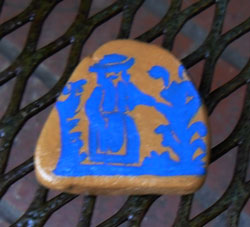
A rock I painted to look like a Malibu Potteries' tile design...
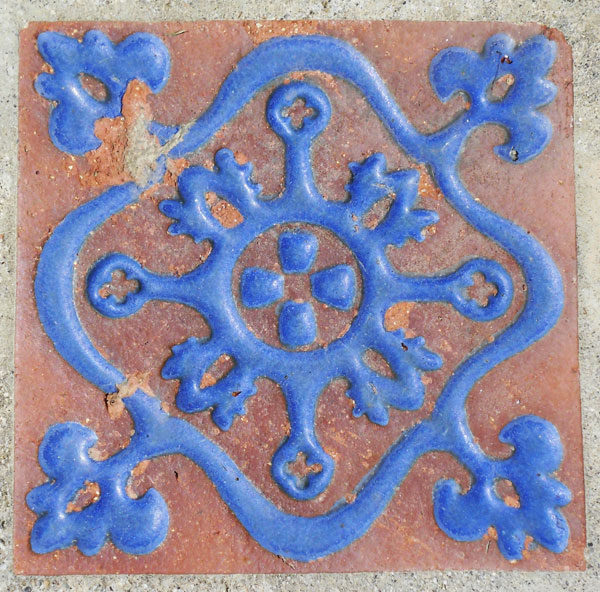 An an actual Malibu Potteries' tile I photographed at Serra Retreat
An an actual Malibu Potteries' tile I photographed at Serra Retreat
I like to paint on rocks because I live by the ocean and rocks are free aplenty, unlike expensive canvas, but I also like how the shapes of stones suggest what should be
painted on them often. I have been obsessed with Malibu Potteries tilework for about 2 years now. Malibu Potteries had a tile factory on Malibu beach, located near where
the Malibu Pier is now, from 1926-1932, and it used Malibu dirts in its tiles and created exquisite art work. OCT. 6, 2014:
I first became acquainted with the concept of "outsider art" in approximately 1978. I was introduced to the concept by an artist
named Toby, who used to ride the rails across the U.S., sometimes stopping for longer periods than others, in the Seattle, WA area. I was a street musician, at the ripe age of 18 back then, and I sang
political music, as well as swing, and Toby liked to listen when in town. One time, in late 1978, Toby came up to me as I was busking at the Pike Place Market, and told me he had been hanging out with "these cats from Juliard," who tallked to him about this new thing
called "outsider music." Since I was already playing "outside" on the streets, I was intrigued. He said it was about playing outside normal conventions, not worrying about key signatures, just
playing, man...getting into the groove. He asked me if I wanted to play some "outsider music" with him and some friends. I said "sure," although I had no idea what we were talking about here...
he told me he would come back and get me, that he was assembling some folks. He returned shortly and took me and this long-red-haired "bum" that I had seen more often than not stumbling down the
street drunk out of his mind, through a labrynth of back alleys and staircases, freight elevators, and empty halls, until we reached an empty loft above the Pike Place Market. It had huge windows
that opened up, overlooking the Puget Sound. It was late afternoon and we could see the ferries going back and forth from downtown to the islands, and the sun was making everything outside the
window glimmer golden. We got inside this loft, and Toby set Harold up on this upside down plastic garbage can, with a spatula as his drum stick. He told me to take out my guitar. He took out a
saxophone. He then said, "alright, let's wail!" All of a sudden, we jammed...with Toby leaning out the big windows blowing sax down to the streets below (I am not sure Toby had ever played sax before) and
I was strumming along with my guitar, as Harold let loose with his spatula on the trash can drum...it was most certainly "outsider music." LOL! I learned a lot from that afternoon though.
One thing I learned was trust. I did, for a brief second, wonder if I was insane to be going into back alleys with these 2 guys who were twice my age, alone. But I really felt there was no
reason not to trust them. While Toby was eccentric, he always made sense and he was an artist, who was paid by the Market to make murals. His art was around us in the Market. And Harold, I knew
his weaknesses well...but he seemed harmless enough. I knew where he lived, in essence. I learned that if you do not take risks, you miss out on some magical moments in life. That time with
Toby and Harold is precious to me in my memory. It is a bizarre life moment. It did not cost money, it was not televised. It was a private moment between humans, risking vulnerabilities to
create. Something. I learned about coloring outside the lines more that day too. I just learned a lot from being a street performer and being exposed to artists that sometimes do not fit into
the mold. I learned it was ok to be an "outsider" and that "outsiders" can be more fun than insiders with all their strict rules. I last saw Toby in a health food store I was working at on
Bainbridge Island, outside of Seattle, in approximately 1997.
SEPT. 20, 2014:
Check out my new ANIMATION BLOG!!
SEPT. 6, 2014:
It is amazing how much the history of animation and moving pictures share in common. Reynaud's work in animation really paved the way for motion pictures. Learn more about Reynaud and his
"Praxinoscopes" in this video on YouTube: https://www.youtube.com/watch?v=5xnQSLxJmMg#t=854. Another pioneer of animation is
Eadweard Muybridge. He studied the way humans and animals move, through sequenced photographs. His story is quite interesting and you can see examples of his work (late 1800's) at his
online archive at http://www.muybridge.org/.
JULY 17, 2014:
An article in the UK Dailymail, dated Aug. 29,
2013, shows the work of 2 Danish artists, Thyra Hilden and Pio Diaz, who have created chandeliers based on drawings of German naturalist, Ernst Haeckel, which use lighting to make effects on
walls that look like forests and tree scenes! Check this article out at http://www.dailymail.co.uk/femail/article-2405420/Amazing-chandelier-inspired-nature-turns-room-forest-using-trick-light.html.
DECEMBER 3, 2013: RICHARD HAAS - ARCHITECTURAL 3-D PAINTER
Richard Haas is an interesting artist who uses buildings for his painting canvas. He paints very interesting architectural illusions onto
buildings. I first heard of his work on the CBS Sunday Morning News at http://www.cbsnews.com/videos/off-the-wall-with-artist-richard-haas/. I think
you will find his art interesting! You can see a catalog of some of his amazing building paintings at http://www.artnet.com/usernet/awc/awc_thumbnail.asp?aid=424207055&gid=424207055&works_of_art=1&cid=75564. Haas
said in the CBS interview that his work was based on the French painting tradition called "trompe-l'oeil", which means "to deceive
the eye." This French painting style uses 3-D illusions in formats which include architecture, paintings, statues, stained glass windows, fountains, and more! There is a Trompe-l'oeil Museum in
France and an International Trompe-l'oeil Festival in Italy as well. This style, trompe-l'oeil, reminds me of 3-D Madonnari or street/chalk painting which
I have seen at festivals. You can see some of this 3-D street art at Leon Keer's website.
NOVEMBER 30, 2013: AI WEIWEI - RADICAL ACTIVIST ARTIST FROM CHINA
One of the first things that caught my eye re Ai Weiwei is on the CBS News it showed a shocking video of him breaking a vase that was thousands of years old from an ancient Chinese dynasty,
a valuable and priceless vase, for the purpose of art - to criticize China's oppressive past, among other things. His father had been a famous Chinese poet and was rounded up in 1957 in China, when
the Communist Party "rehabilitated" poets and intellectuals into laborers, via forced labor camps. Weiwei's family spent 19 years in such a camp as they tried to "reeducate" his father. Weiwei's
anger at the Chinese government is something that many people can relate to regarding their feelings towards their own governments, thus Weiwei's art really is a language of freedom for all who have
been oppressed by their own governments. Weiwei "disappeared" for 18 months in 2011, and was told not to use the internet anymore for his activism upon "release." Weiwei was a little subdued for a minute or
two, but then quickly went back to open activism. He has now released a music video entitled "Dumbass," which mocks and renacts the time he was taken into detention in 2011. You can view this
video at http://aiweiwei.com/music/dumbass. It is intense and even humorous, and I am sure it enrages the Chinese government.
The next thing that caught my attention was his use of another one of these priceless, ancient pieces of pottery, an urn from the Han Dynasty, to paint it white with a red Coca-Cola logo on it! Wow! What imagery! That
imagery meets the needs of any anti-capitalist/anti-corporatist such as myself. These images Weiwei is using, are immediately striking. His motto on his website is "1 Image is Worth 1001 Words."
I am a writer, primarily. Only in the last 10+ years have I begun to really study color and design, due to web building and graphic design demands via the internet. But seeing Weiwei's work really
fuels my own desires to use more artistic imagery to get my ideas across. Why waste 1001 words when I would have said it with one image? Ah, but therein is the rub! One image can take
longer than 1001 words to create! Depends on the project! So...I have now begun to add ART to my own arsenal of activist tools in our modern world.
I have always appreciated art, and thus this page is just a place for me to warehouse things I have found inspirational for my own easy reference, but also to share such beauty and genius
with others out in the world as well. It is fitting I have begun this art blog with Weiwei. He is a great inspiration to me. He is not a saint. He has human flaws, such as infidelity, which at first
disappointed me, but then I realized that by him being flawed and human, it makes it more possible for someone like me, who also has flaws, to still create amazing, inspirational works of art.
 This is a photo I took of the peacock fountain in the back
of the Adamson House in Malibu, which is owned by the State of CA. and has free admission to all who want to see this fabulous "Taj Mahal of Tile." Here is another painted rock I made to
replicate a Malibu Potteries tile...
This is a photo I took of the peacock fountain in the back
of the Adamson House in Malibu, which is owned by the State of CA. and has free admission to all who want to see this fabulous "Taj Mahal of Tile." Here is another painted rock I made to
replicate a Malibu Potteries tile...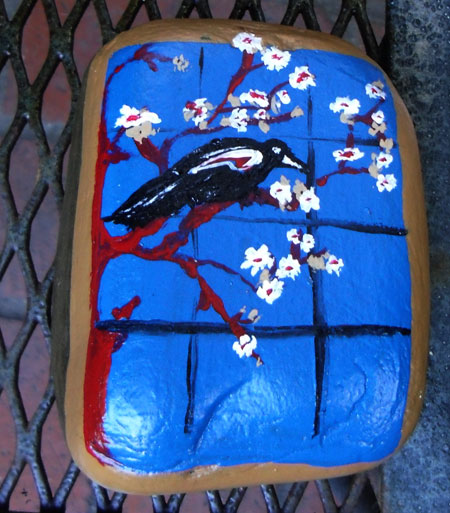 I am currently writing a book on the history of Malibu Potteries' tilework. Here are some other pictures
of historic Malibu Potteries tiles I have taken...
I am currently writing a book on the history of Malibu Potteries' tilework. Here are some other pictures
of historic Malibu Potteries tiles I have taken...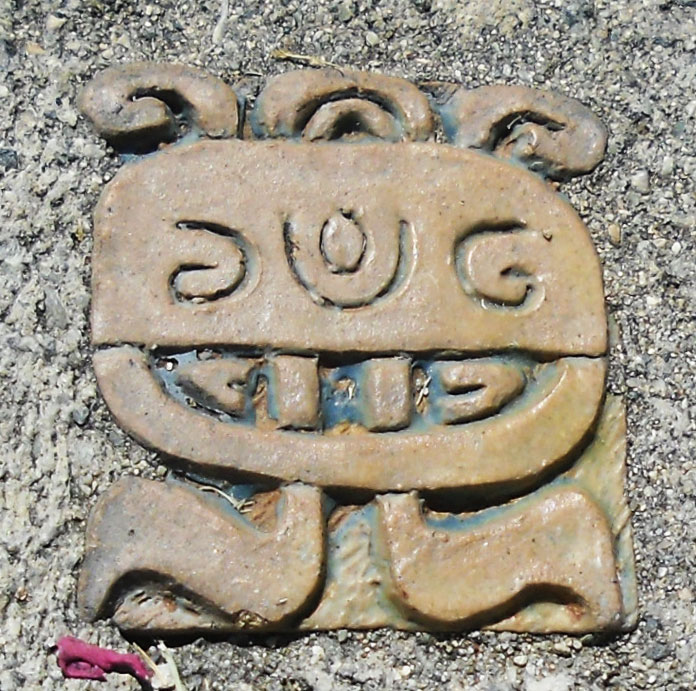 This gorgon tile, made with Malibu dirt, is a Malibu Potteries tile which is at Serra Retreat.
This gorgon tile, made with Malibu dirt, is a Malibu Potteries tile which is at Serra Retreat.
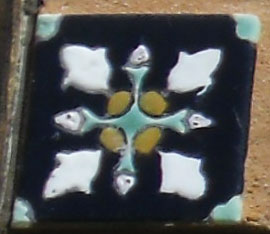 This black small tile is also from Serra Retreat. Malibu Potteries made a wide selection of different types of tile designs!
This black small tile is also from Serra Retreat. Malibu Potteries made a wide selection of different types of tile designs! 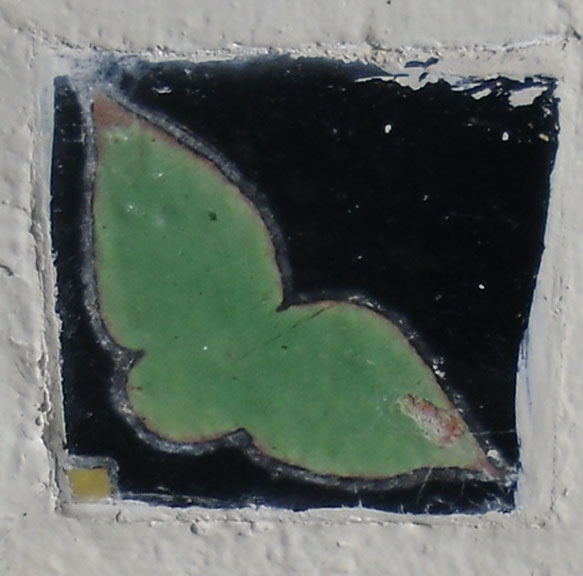 I
love the simplicity of this small flora/whale tail-ish tile they made!
I
love the simplicity of this small flora/whale tail-ish tile they made! 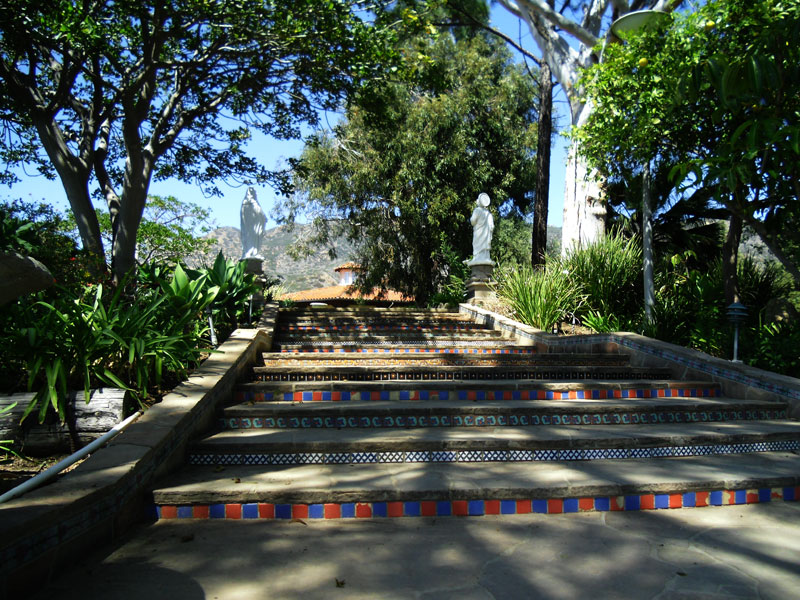 Serra Retreat in Malibu, and the Adamson House, across the street from Serra
Retreat, are the best places to view these tiles. Do not be intimidated by the visitor's gate at the mouth of Serra Canyon. Just tell them you are going on a day retreat to the Serra Retreat
and they will give you a pass and let you in for free. Serra Retreat is open for free to the public M-F. The Adamson House is open to the public for free M-Sat. (sans a small fee if you want to go inside
the house for a tour but the outside is worth the visit alone and parking costs money too).
Serra Retreat in Malibu, and the Adamson House, across the street from Serra
Retreat, are the best places to view these tiles. Do not be intimidated by the visitor's gate at the mouth of Serra Canyon. Just tell them you are going on a day retreat to the Serra Retreat
and they will give you a pass and let you in for free. Serra Retreat is open for free to the public M-F. The Adamson House is open to the public for free M-Sat. (sans a small fee if you want to go inside
the house for a tour but the outside is worth the visit alone and parking costs money too).
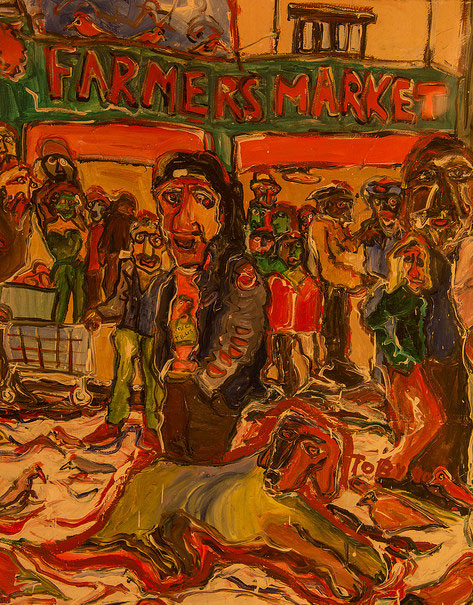
A mural by Toby at the Pike Place Market, dated 1980
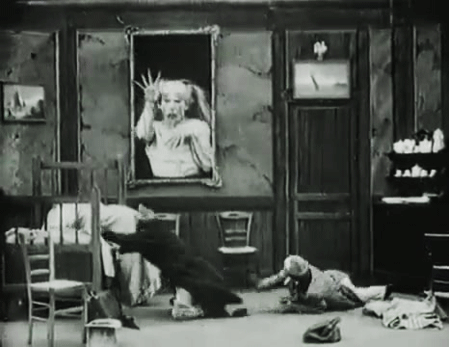
De Chomon's "Haunted House" from 1908
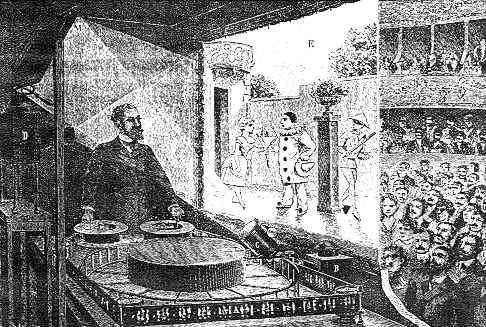
Reynaud's "Praxinoscope"
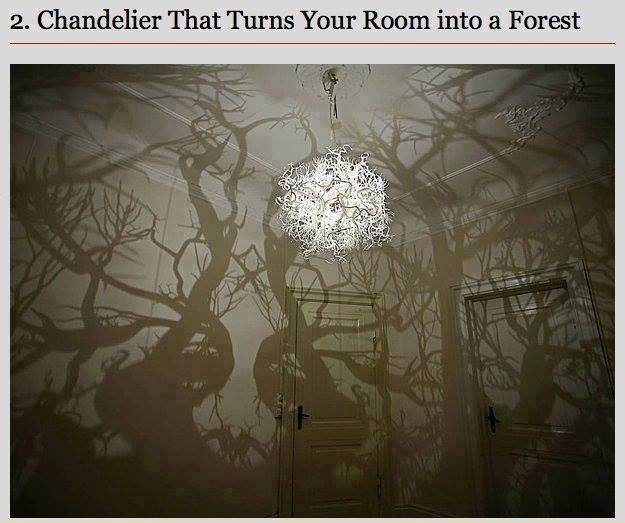
Chandelier makes room look like a forest, by Danish artists, Thyra Hilden and Pio Diaz!
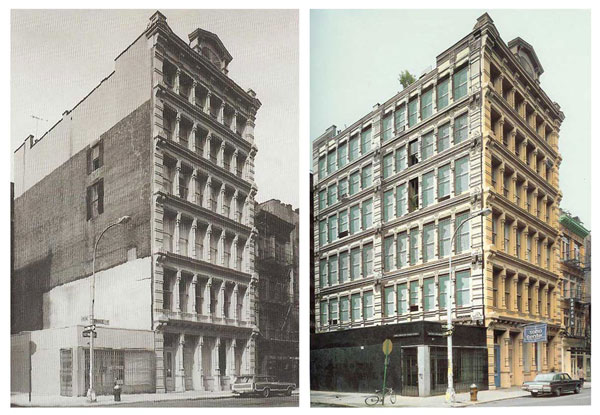
This is a photo of a building Richard Haas painted (before and after). It is located at 112-114 Prince Street, New York and was painted in 1975.
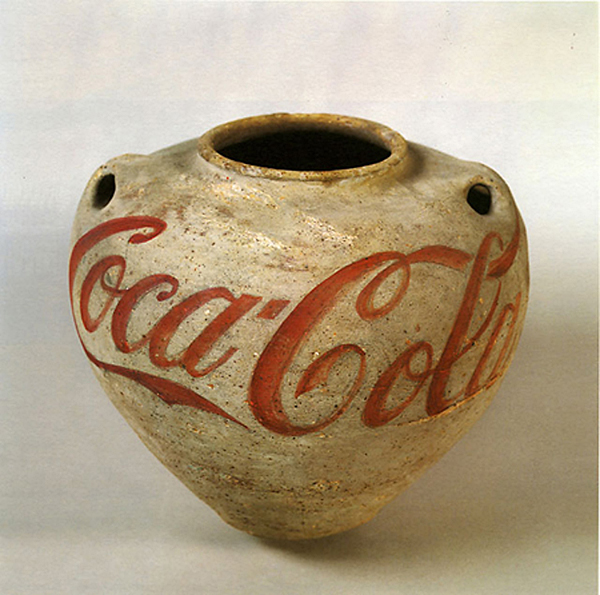
Ai Weiwei is one of my favorite artists. He is a serious political threat to China's oppresive government through his messages via art. He is inspirational to both artists and activists. I
first heard about Ai Weiwei on a January 2012 broadcast of the CBS Sunday Morning News (a show that tends to cover more art than most news shows). You can see parts of this broadcast at
http://www.cbsnews.com/videos/political-artist-ai-weiwei/. The next exposure I had to Weiwei was flipping through play on demand videos
on Netflix. I stumbled on one entitled, "Ai Weiwei: Never Sorry." You can view this documentary on Netflix at http://movies.netflix.com/WiMovie/Ai_Weiwei_Never_Sorry/70229921?locale=en-US.
This documentary, "Never Sorry," was so powerful that I could not stop thinking about it. I then looked him up on the internet and began following him as both a political activist and artist.
Thank you to Resist.ca for hosting this website!










